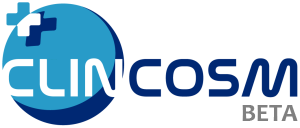Choose2Quit: Improving Equity in Smoking Cessation for Low Income Adults
Study Details
Study Description
Brief Summary
The goal of this study is to evaluate the effectiveness of a tobacco treatment navigator to improve primary care patient engagement in tobacco cessation support. We compare an ask, advise and connect to the quitline approach vs. the novel tobacco treatment navigator approach on the primary outcomes of receipt of tobacco cessation counseling sessions and receipt of tobacco cessation medications.
| Condition or Disease | Intervention/Treatment | Phase |
|---|---|---|
|
N/A |
Detailed Description
Our novel intervention, Choose2Quit, builds on our prior successes with the Ask, Advice, Connect study, but now 1) allows personalized choice of counseling modality (phone, text, web, in-person); 2) conveys the value and low/no-cost availability of medications to support quit attempt success and sends providers the patient's request in e-prescription to transmit to patient's pharmacy; 3) assesses patient's need to manage social barriers to quitting by linking them to Unite-US; and 4) uses an initial phone contact from a recognizable local number, will increase the engagement of patients in cessation treatment and in tobacco cessation. This study aims to:
-
Test the effect of a traditional eReferral vs. a Choose2Quit personalized guidance and choice approach on the ability to contact patients, and the proportion of patients that initiate tobacco cessation treatment, use tobacco cessation medications and make quit attempts.
-
Assess the impact of each intervention arm on equitable engagement in tobacco cessation treatment, medication use and quit outcomes across gender, race and age groups.
-
Evaluate intervention experience from the patient perspective.
-
Evaluate the cost to implement, and per engagement in each of the intervention arms.
The study is accomplished using a 2-arm randomized trial. Randomization into the traditional eReferral vs. Choose2Quit intervention arms will occur at the patient level with a 1:1 group assignment. Individuals that are ready to quit in the next 30 days and are interested in being connected with tobacco cessation resources will be randomized. Randomization of eligible patients occurs automatically with an electronic health record algorithm that routes the eReferral to the Quitline (traditional eReferral) or the Choose2Quit intervention. The Ask-Advise-Connect process is exactly the same for medical assistants; medical assistants and patients are blind to group assignment
Study Design
Arms and Interventions
| Arm | Intervention/Treatment |
|---|---|
| Active Comparator: Referral to Quitline Patients who indicate they are ready to quit in the next 30 days are offered an electronic referral to the state quitline for tobacco cessation services. |
Other: Referral to Quitline
An electronic referral to the state quitline is placed. This prompts the quitline to proactively call the patient to enroll in counseling services.
|
| Experimental: Choose2Quit Patients who indicate they are ready to quit in the next 30 days are offered an electronic referral to the Choose2Quit tobacco treatment navigator who walks the patient through choices for tobacco cessation counseling, tobacco cessation medications and other supports (e.g. texting, apps) and facilitates placing referrals, orders and providing information. |
Other: Choose2Quit
An electronic referral to the Choose2quit tobacco cessation navigator is placed. This prompts the navigator to call the patient to review options for tobacco cessation counseling, tobacco cessation medications and other supports.
|
Outcome Measures
Primary Outcome Measures
- receipt of tobacco cessation counseling [4 weeks after referral]
receipt of 1 or more tobacco cessation counseling sessions from referral sources
- receipt of tobacco cessation medications [within 4 weeks after referral]
documentation of orders for nicotine replacement therapy, varenicline or bupropion in electronic health record
Secondary Outcome Measures
- 7-day point prevalence abstinence [8 weeks after referral]
7-day point prevalence abstinence from tobacco use
Eligibility Criteria
Criteria
Inclusion Criteria:
-
patient care visit to one of the participating primary care clinics during the study period
-
reports current tobacco use
-
reports interest in quitting tobacco in the next 30 days
-
accepts offer of referral to tobacco cessation support
Exclusion Criteria:
-
not interested in quitting in next 30 days
-
not interested in assistance
Contacts and Locations
Locations
No locations specified.Sponsors and Collaborators
- Oregon Health and Science University
- Case Western Reserve University
- MetroHealth Health System
Investigators
None specified.Study Documents (Full-Text)
None provided.More Information
Publications
None provided.- RSG-18-137-01-CPPB
